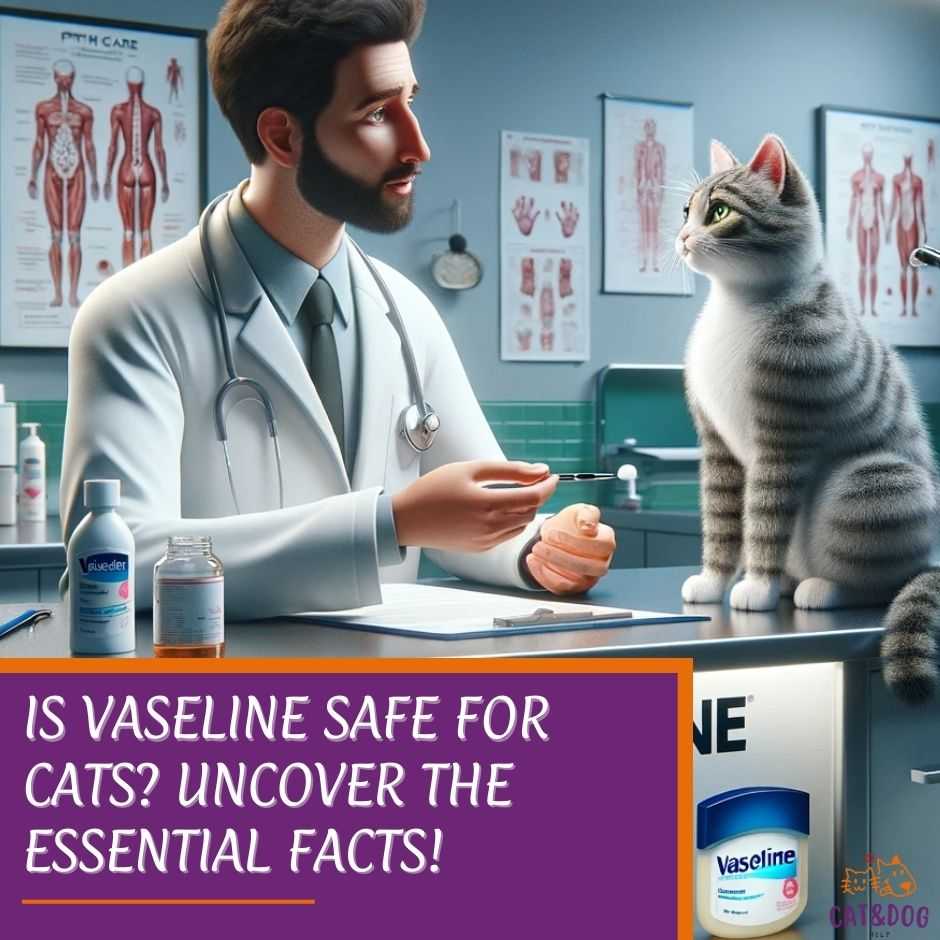Is Vaseline safe for cats?
As a responsible pet owner, it’s essential to consider the safety of any product before using it on your beloved cat. While Vaseline isn’t toxic to cats, it’s not a straightforward yes or no answer regarding its safety.
Have you ever noticed that little jar of brand name Vaseline and wondered if it’s something you can use for your furry friend?
Vaseline, commonly known as petroleum jelly, is frequently reached to soothe dry skin and protect against minor cuts in humans. (1)
Naturally, you might think about its potential benefits for your cat, especially when faced with common issues like hairballs or minor skin irritations.
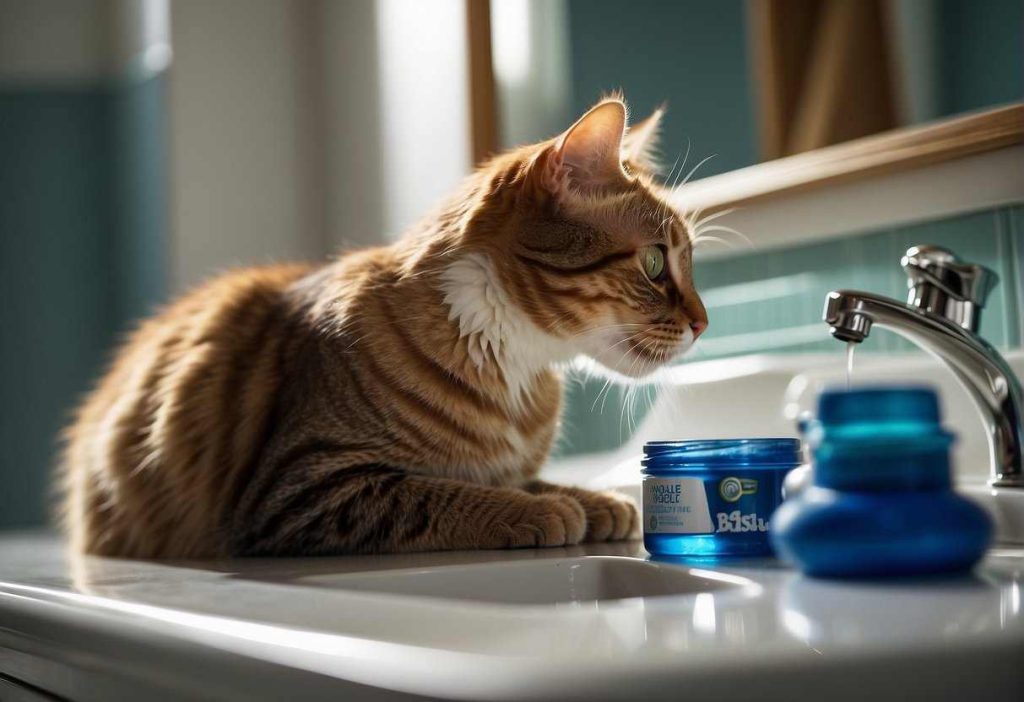
The decision to use Vaseline should be made with an understanding of the potential risks and benefits, including its use as a cat vaseline.
This article is here to shed some light on the matter, so you can make an informed decision about using Vaseline as part of your cat’s care routine. (2)
Key Takeaways
- Vaseline is not toxic to cats but should be used with caution.
- Consult a veterinarian before using Vaseline for any cat-related health issues.
- Understanding the risks and benefits of Vaseline can help in making safe choices for your pet’s care.
Assessing the Safety of Vaseline for Cats
Have you ever noticed your cat’s paws feeling a bit rough? Before reaching for the Vaseline, let’s paw-se for a moment to consider its safety and uses for our feline friends.
General Safety Overview You’ve probably used Vaseline as a moisturizer for yourself, but can your cat benefit from it too?
Topically applied, Vaseline can act as a moisture barrier for your cat’s paws or provide a protective coat on minor wounds. But watch out! Your furry pal might be tempted to lick it off, leading to ingestion.
Specific Use for Cat Paws When your cat’s paws seem dry or cracked, offering relief is a must! Vaseline can soothe those paws in a pinch by:
- Creating a barrier against harsh surfaces
- Preventing further moisture loss
However, it’s important not to go overboard as Vaseline doesn’t hydrate the skin. Plus, there’s a risk if your cat decides to groom those toes and ingest too much.
Internal Use for Hairball Treatment Have you heard of Vaseline as an old-school hairball remedy? It’s slippery stuff and, in small doses, can help bind hairballs, making them easier to pass. Here’s what you need to know:
- Advantages: Assists in hairball elimination (3)
- Concerns: Not designed for consumption, potential for digestive upset or interference with nutrient absorption
Remember, your vet is the cat’s meow when it comes to advice on internal use. So, if hairballs are making your life hairy, a vet-approved hairball treatment might be the safer way to go.
While considering the safety of various products around your cat, it’s also worth exploring cat-friendly home scents that can enhance your living space without the risks associated with certain chemicals or essential oils.
Keep these insights in mind and you’ll be feline fine about keeping your kitty happy and healthy!
Additionally, it is important to monitor your cat’s poop to ensure that hairballs are passing through the digestive system without any issues.
Is Vaseline Safe for Cats: A Broader Perspective

Many articles tout Vaseline as a handy remedy for your cat’s dry paws or even as a hairball treatment—it’s not toxic in tiny doses after all.
However, other remedies can be used besides Vaseline, such as hydration through a water fountain. But hang on a second!
The advice often stops at “a little won’t hurt,” which might leave you asking, “But what about the bigger picture?”
- Not All Uses Are Purr-fect: Applying Vaseline on superficial wounds seems like a quick fix, but did you know using it on deep or infected wounds is a no-go?
- Aspiration Risks Ahoy: Some say put a dab on their nose to ease hairballs, yet there’s a dreaded risk of aspiration pneumonia if they inhale it.
You may ask, “Have vets weighed in?” Yep, their advice often comes with a caution sign, flagging the dangers of Vaseline if misused.
Think of it as a tool in your pet care toolbox, to be used sparingly and under professional guidance.
So, let’s splice in some serious science and vet wisdom:
- Weighty Words: Vaseline, a byproduct of petroleum, has been around for ages in health products. (4)
- Cat’s Health: It’s a “sometimes snack” to help things glide along, but too much can gum up your kitty’s insides.
| Use Case | Safe? | Notes |
| Dry Paws | Yes | Only in small amounts. |
| Hairball Treatment | Maybe | Consult your vet first. |
| Wounds | Yes | Only on superficial wounds and never on deep or infected ones. |
Remember, when it comes to Vaseline, less is more, and your vet’s word is gold. Always check with a professional before making it part of your cat care routine.
If a wound occurs on your feline friend’s paw or skin, you can give him food that contains Vitamin C which can speed up the healing process.
Keep things light and safe—just like your cat’s fur after a good brushing!
Diverse Vet Opinions and Insights

Veterinarians have varying opinions when it comes to the use of Vaseline for feline friends.
Benefits:
- Vaseline can act as a protective barrier for minor cuts and dry skin. (5)
- Using it sparingly could help keep a wound clean and guard against irritation.
Risks:
- If ingested in large amounts, it might cause digestive issues such as nausea, vomiting, or diarrhea.
- There’s a risk of aspiration pneumonia, especially with the liquid form of paraffin.
Veterinary advice leans towards caution. You’re probably asking yourself, “What should I watch out for?” Here’s the quick lowdown:
- Consult Your Vet First: They know your cat’s history and will give individual advice.
- Amount Matters: A little dab on a superficial wound is often okay.
- Application Method: Oral intake carries risks, so get a vet’s okay, and rectal applications should be avoided unless specifically directed by your veterinarian.
Curious about alternatives? Well, there are other cat-safe ointments and wound-care products your vet might recommend for more serious or infected wounds.
A professional’s insight is golden because they’ll tailor the advice to your kitty’s unique situation.
Just remember, your cat’s health is in your hands, and it’s always better to play it safe than be sorry. So when in doubt, give that vet a shout!
Practical Guidelines for Cat Owners
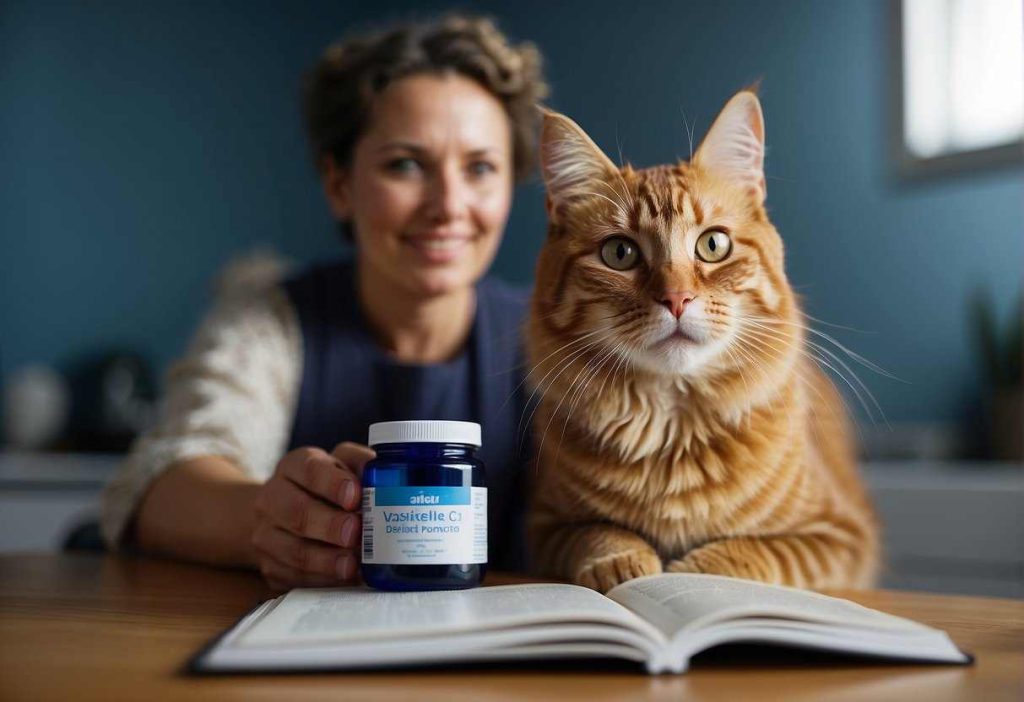
Safe Application of Vaseline:
You’re probably wondering how you can use Vaseline to help your furry friend without causing them any harm. Here’s the scoop:
- Dosage: A small dab will do! Think pea-sized amount.
- Method: For dry paws, apply a thin layer directly to the paw pads. For minor wounds, gently dab on the surface.
Remember: Less is more. Use sparingly to avoid licking and ingestion, which can lead to upset stomachs.
Because cats cannot be separated from the word lick because they like to lick something or other objects. So you just have to pay more attention.
Addressing Overuse and Ingestion:
If you’ve accidentally used too much or your kitty has been a little too eager to lick it off, here’s what to do:
- Remove excess Vaseline immediately.
- Monitor for any signs of gastrointestinal upset such as diarrhea or vomiting.
- Provide fresh water to help digestion and avoid dehydration. (6)
Emergency Measures and Precautions:
Oops, did too much Vaseline end up in your cat’s tummy? First, don’t panic. Second, follow these steps:
- Don’t induce vomiting.
- Call your vet for advice, especially if you notice any discomfort or changes in behavior.
Using Vaseline can be a safe choice for minor irritations, but always use your best judgment and consult your vet when in doubt.
After all, you’re the best person to make sure your cat stays healthy, happy, and as adorable as ever!
Long-Term Effects and Case Studies
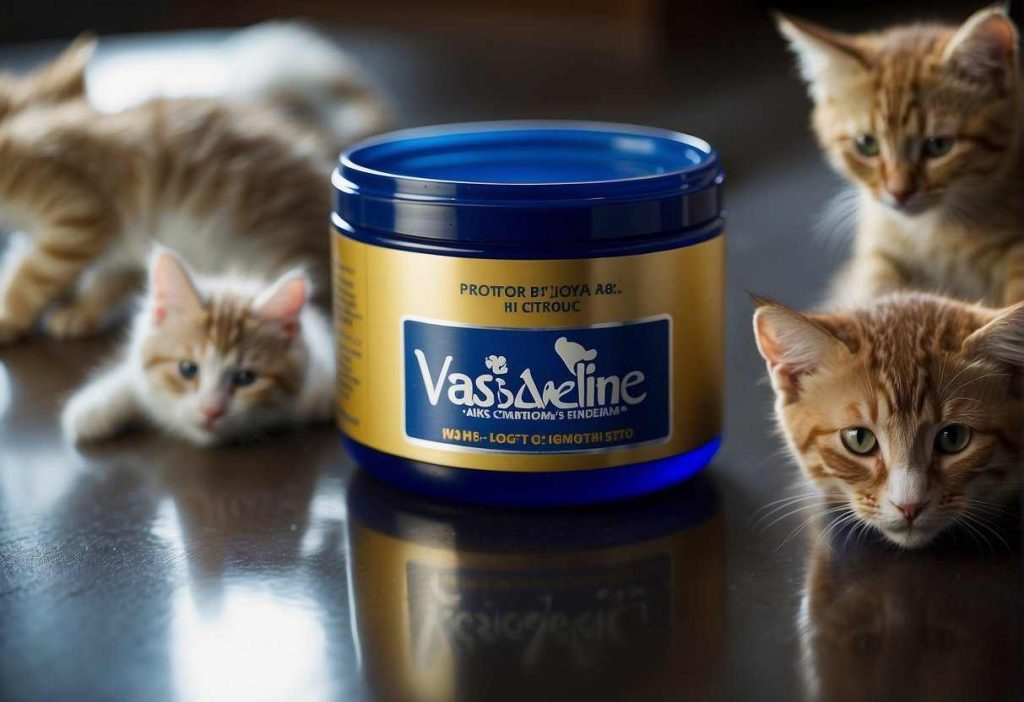
Let’s paw through the details and see what the long-term effects are of using Vaseline on cats, illuminated by case studies and scientific research.
Investigating Long-Term Usage
It’s common knowledge that Vaseline, also known as petroleum jelly, is a go-to for minor cuts and dry skin in humans. (7)
Its protective barrier properties have tempted some cat owners to apply it on their cat’s paws or use it to address hairball issues. However, when we’re dealing with our feline friends, we need to be extra cautious.
Scientific Research and Case Studies
Case Studies You Should Know:
- One study showed that Vaseline does not absorb into surfaces; it rather forms a protective layer. This indicates that Vaseline won’t moisturize but will shield the paws from harsh surfaces.
- Frequent ingestion can lead to gastrointestinal upset. Some cat owners have noted issues like diarrhea and vomiting when their cats licked off something from their fur or paws.
Here’s the scoop on research:
- The ISFM and AAFP guidelines revealed that during long-term use of pharmaceuticals (though not Vaseline specifically), oral meloxicam caused vomiting in about 4% of cats. This fact, while not about Vaseline, enlightens us about the potential for similar reactions if cats ingest non-food items over a longer period.
Remember, every cat is unique. What might be harmless in small doses for one might be a problem for another.
So, if you’re considering using Vaseline as a home remedy for your cat, think about the purpose and consult your vet. They might suggest better alternatives that are specifically designed for cats.
Keep those purrs going and your kitty happy and healthy!
Quick Recap
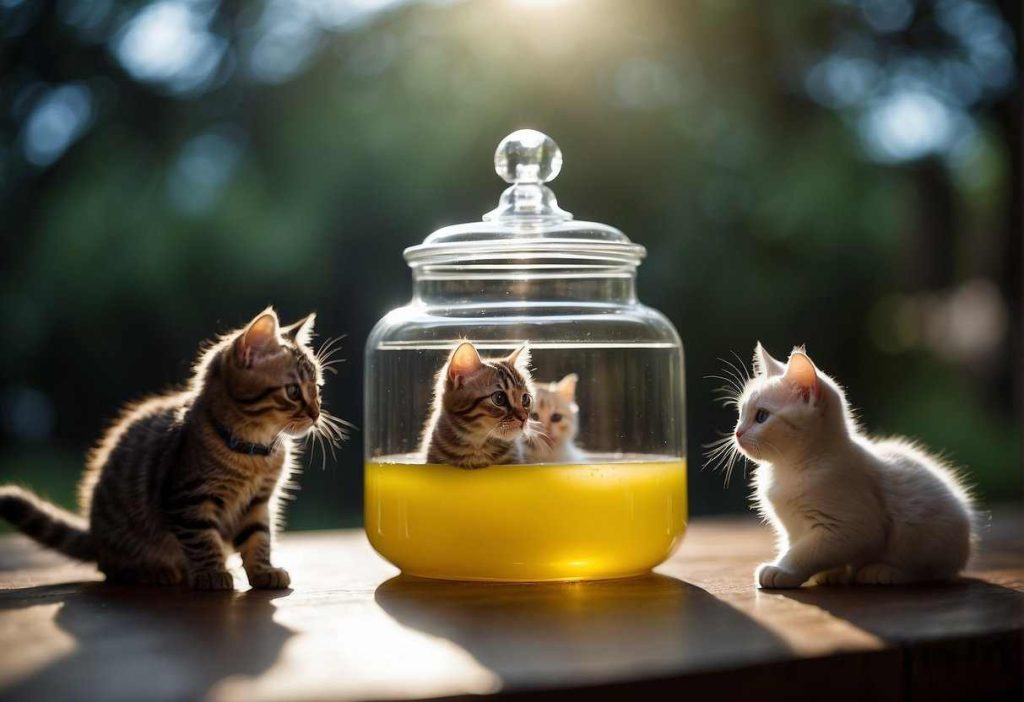
Is Vaseline Safe? Yes, but it’s a conditional ‘yes.’ Vaseline, or petroleum jelly, is non-toxic to cats. It’s often utilized as a lubricant for hairballs or a moisturizer for dry paw pads.
But like all good things, it should be used in moderation.
Usage Tips:
- Only apply Vaseline externally, avoiding ingestion.
- Use it lightly to prevent your cat from licking too much off.
Risks to Watch Out for:
- Overconsumption can lead to an upset stomach.
- Using it for serious wounds is a no-go; always consult your vet.
For minor scrapes, a little blob of Vaseline can act as a barrier, keeping the ouchie clean and more comfortable. Remember, a dab will do, alright?
Quantities Matter:
- A smidge for dry skin.
- A tad on the belly for hairball help.
Signs You’ve Overdone It:
- Vomiting or diarrhea means “Whoops, too much!”
Finally, always have alternatives ready. If the thought of Vaseline makes you uneasy, products designed specifically for cats are your best bet.
So, use your judgment, keep it on the down-low, and you’ve got a handy little helper in Vaseline. Stay observant, and give your vet a shout if something seems off, okay?
Keep those purrs coming and your cat’s wellness in check — you’ve got this!
Frequently Asked Questions
When it comes to your feline friend’s well-being, knowing the dos and don’ts is crucial. Below you’ll find the answers to some common questions about using Vaseline for your cat.
Is Vaseline toxic to cats if ingested?
Though not toxic, ingesting large quantities of Vaseline can lead to digestive issues like diarrhea and vomiting.
It’s important to be mindful of how much your cat could potentially ingest while grooming.
Can Vaseline be used to treat my cat’s dry skin?
Yes, Vaseline can be used on your cat’s dry skin. However, it should be used in small quantities and in areas they can’t reach to lick off to prevent ingestion.
How much Vaseline can I safely apply to my cat’s paws?
A thin layer on your cat’s paws is enough to moisturize and protect dry, cracked pads. Be sure they don’t lick too much off to avoid stomach upset.
Can Vaseline cause allergic reactions in cats?
While uncommon, cats can develop allergies to any substance, including Vaseline.
Observe your cat after application for any signs of an allergic reaction, such as skin irritation or itching.
Can Vaseline help with my cat’s hairballs?
Vaseline is sometimes used as a hairball remedy, but it’s crucial to consult your vet before starting this treatment. There might be safer and more effective alternatives
Is it safe to apply Vaseline to a cat’s wound?
Applying Vaseline to a cat’s wound can trap bacteria and delay healing. For wound care, it’s best to seek veterinary advice.
Are there any natural alternatives to Vaseline for cat care?
Yes, there are natural alternatives like coconut oil that can be used for similar purposes as Vaseline in cat care.
Always check with your vet before trying a new remedy on your cat. Remember, these snippets of advice should never replace professional veterinary care.
When in doubt, always reach out to your vet to ensure the health and safety of your precious pet.
- Free Online Casino Games: What You Need to Know - July 26, 2025
- Ideal Casinos Mobile: The Ultimate Guide to Mobile Betting - July 26, 2025
- The Ultimate Overview to Casino Site Gamings Online - July 26, 2025

